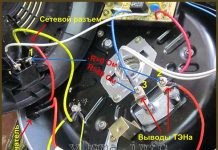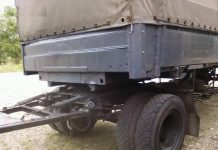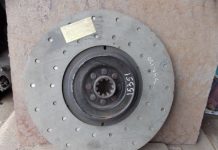In detail: DIY repair of diesel injectors from a real master for the site my.housecope.com.
The injection mechanics is the main difference between a diesel engine and a gasoline engine. In a diesel internal combustion engine, fuel is supplied to the combustion chamber using a nozzle. The device injects fuel in a metered manner into a chamber with a high temperature and pressure, after which the diesel fuel ignites. The nozzle is subjected to the greatest load: the part is constantly in an aggressive environment and works at high intensity. Any negative factor can disable the part or significantly reduce its resource, after which the diesel engine nozzles will need to be repaired.
To understand the mechanics of the injector, we will describe the injection cycle schematically:
- The injection pump takes fuel from the tank;
- then the pump saturates the fuel rail with diesel fuel;
- fuel enters the channels that lead to the nozzle;
- inside the nozzle, fuel flows to the sprayer;
- when the pressure on the atomizer reaches the set threshold, the nozzle opens and diesel fuel enters the combustion chamber.
Let us describe the design of the part using the example of a primitive mechanical nozzle with 1 spring. In the lateral part there is a channel that provides a continuous supply of diesel fuel. Inside the nozzle chamber there is a movable barrier with a spring and a needle, which drops when the pressure rises. The needle rises, clearing the path of fuel to the sprayer.
Additionally, more advanced types of nozzles can be noted:
- Piezoelectric: The spring pusher is lowered by a piezoelectric element. This technology provides a high intensity of opening of the atomizer: fuel economy is achieved, while the internal combustion engine operates more smoothly.
- Electro-hydraulic: The design includes an inlet and outlet choke and an electromechanical valve. The operating mode of the components is controlled by the engine control unit.
- Unit injectors: used in engines that do not have a high-pressure fuel pump. The fuel is supplied directly to the nozzle. These spraying devices have their own plunger pair inside, which generates the pressure required for injection.
| Video (click to play). |
Due to excessive loads, the injector may fail due to a violation of the operating mode of the motor. Manufacturers declare the resource of parts to be up to 200,000 km, but due to negative operating factors, wear of parts appears much earlier.
Repair of diesel injectors may be required for the following reasons:
- Low quality diesel fuel: the scourge of all "diesel operators". Due to impurities in the fuel, the sprayer becomes clogged; the dosage and the fuel supply mode are violated.
- Poor assembly quality of the injection component or factory defect: the injector does not withstand the operating conditions, the part as a whole or individual components fail.
- Mechanical damage caused by incorrect operation of adjacent ICE systems.
Usually, breakdowns are of the following nature: the spray angle and the amount of supplied fuel change, the integrity of the body is violated, and the needle travel worsens.
Let's briefly describe the "symptomatic series":
- jerks and jerks are felt when moving;
- The internal combustion engine is unstable at idle, stalls;
- when the engine is running, an excessive amount of exhaust is emitted;
- tangible loss of traction;
- failure of individual cylinders;
- gray or black smoke from the exhaust pipe.
It is preferable to entrust the routine maintenance or overhaul of diesel engine injectors to qualified specialists - they will be able to restore and adjust the part on high-precision automated stands. However, a certain set of repair procedures can also be carried out in artisanal conditions without the use of complex equipment.
To carry out self-service of diesel engine sprayers, the car owner will need:
- a set of open-end or spanner wrenches;
- screwdrivers for straight and Phillips head;
- clean dry rags;
- maximeter;
- flushing fluid for internal combustion engines.
It is recommended to carry out work in a dry and lighted, dust-free garage.
Diagnostics of diesel injectors and their maintenance involves removing the nozzles from the internal combustion engine. Before starting work, it is recommended to thoroughly wash the engine and engine compartment to avoid the ingress of debris and foreign particles. With particular fondness, you need to rinse the cylinder head. High pressure tubing should be marked with markings to avoid confusion during reassembly.
Before removing it is necessary to close the nozzle fittings (use plastic caps) to avoid contamination. It is not recommended to use ordinary open-end wrenches to dismantle the nozzles - an inexperienced repairman can strip the threads from the nozzles. If the required qualifications are not available, use spanners and a long-handled head tool.
After removing the nozzles from the holes, dry them and remove external dirt with a rag. O-rings are placed in the holes of the nozzles. When repairing injection parts, they are replaced with new ones without fail. Do not allow dirt from the rings to get into the injection system during removal.
There are several methods to check if the sprayer is working properly. The easiest way is to check the injector while the engine is running:
- Start the "engine" at idle speed.
- Begin to unscrew the nozzles one by one in turn.
- If, after removal, the operation of the motor has deteriorated, then the remote nozzle is operational and must be returned to its place.
- By the method of elimination, you will find an injector, the dismantling of which will not change the operating mode of the internal combustion engine. This will be the broken device.
You can use a multimeter for diagnostics. In advance, it is necessary to throw off the battery terminals and disconnect the wiring of the injectors, and then "check" every detail with the device. On high resistance injectors, the device values will be in the range of 11 - 17 ohms; at low impedance, the multimeter will show up to 5 ohms.
The defective injector must be inspected. First, we look for leaks in the body of the part. If there are none, proceed to disassembling the part. We fasten the part in a vise and knock out the sprayer with a gentle tap. Next, you need a thorough cleaning: we soak the parts of the nozzle in diesel fuel or solvent to remove carbon deposits. Remove fumes and deposits with a fine steel grater. After completing the cleaning, you need to check the nozzle at the maximum meter. If the optimal injection parameters have been achieved, the device is ready to be installed in the engine.
In other cases, it is necessary to completely replace the atomizer on the defective nozzle. When installing a new part, carefully remove all factory grease, otherwise the device will not work.
Before disassembling the device, mark all parts with a marker to avoid confusion. Be especially careful when marking high pressure hoses. The nozzle is screwed in by hand as far as possible. Further tightening is done with a dynamometer wrench. For tightening values, refer to the motor manual. After installing the injector, evacuate air from the fuel system. On modern cars, it is enough to turn the starter several times for this; or use a manual priming pump (if equipped).
Let's list the main features:
- the resource declared by the manufacturer has been developed;
- there are breakdowns on the case, other leaks;
- burnt out spray nut: if the problem is not eliminated early, the spray itself will become unusable.
Please note that on some engines, after installing a new injector, it is necessary to "tie" it to the engine: make changes to the settings of the control unit.
Self-repair of injectors is a rather forced measure. Such a service in artisanal conditions can bring success only in the case of the highest qualifications of the master.The main problem of garage repairs is the lack of high-precision bench equipment for diagnostics. The repairman cannot objectively assess the effectiveness of the service measures.
If there is an opportunity to contact a service station, do not neglect it: computer equipment and cleaning stands will extend the life of the injectors and save them from potential expensive repairs. The same ultrasonic cleaning can save a motorist from engine problems for several seasons. It is not possible to repair modern Common Rail injection systems in a garage: you need a mandatory fine-tuning of the part by computer.
Use a cleaning fuel additive to avoid costly repairs and replacement parts. They prevent the formation of carbon deposits and the settling of deposits. The use of additives should be systematic, not one-off. Remember, additives are about preventing breakdowns, not fixing them.
During the operation of a diesel engine, the atomization efficiency of the fuel gradually decreases. At a certain stage, it is necessary to repair or change the nozzle atomizer, and sometimes the entire nozzle. All this can be done on your own, without resorting to expensive car service services.
One of the main elements of any fuel system, including Common Rail (CR), is an injector, the main functions of which are:
- fuel injection;
- sealing between the injection system and the combustion chamber;
- saving fuel consumption.
The injector element from which fuel is injected is called the atomizer. Its leading edge is located in the combustion chamber and is constantly subjected to mechanical and thermal stress. When the fuel passes through the nozzle, the atomizer cools, but during long-term operation this may not be enough. Therefore, the nozzle tip is made of high temperature resistant materials. In the CR system, the spray is built into the nozzle - this increases its service life.
In high-pressure fuel pumps (TNVD) in-line multi-plunger, distribution and individual types of sprayers in the nozzle are fixed with a threaded connection. As a result, the nozzle is a single unit.
CR fuel systems or unit injectors have integral (modular) atomizers. Pin injectors are installed on engines with distributed combustion chambers, and nozzle nozzles on engines with direct injection.
In the CR system, injectors are controlled through an electronic control unit (ECU), from which certain signals are sent to the injectors. This is how the CR differs from the mechanical system, where the nozzles open when a certain pressure is reached.
Electro-hydraulic injectors also open when fuel pressure rises. However, the spray needle has a rim that acts as a piston. Fuel is supplied under high pressure both under and above the piston. Since the pressure is the same, the needle is pressed against the seat and the nebulizer is closed. There is a space (channel) above the needle, which is combined with the drain line. A valve (piezoelectric or electromagnetic) is built into this space, which closes the channel during operation.
When a signal is supplied from the ECU, the injector is triggered. The valve opens, the channel becomes free, and the fuel above the needle enters the corresponding line. The result is a pressure difference, and the fuel under the needle lifts the spring that opens the nozzle opening. At this moment, injection occurs. In the absence of a signal from the ECU, the pressure stabilizes and the injector closes.
In good working order, the injector atomizes the fuel in the form of a cloud. If the fuel is supplied in a jet, then the injector is faulty.









